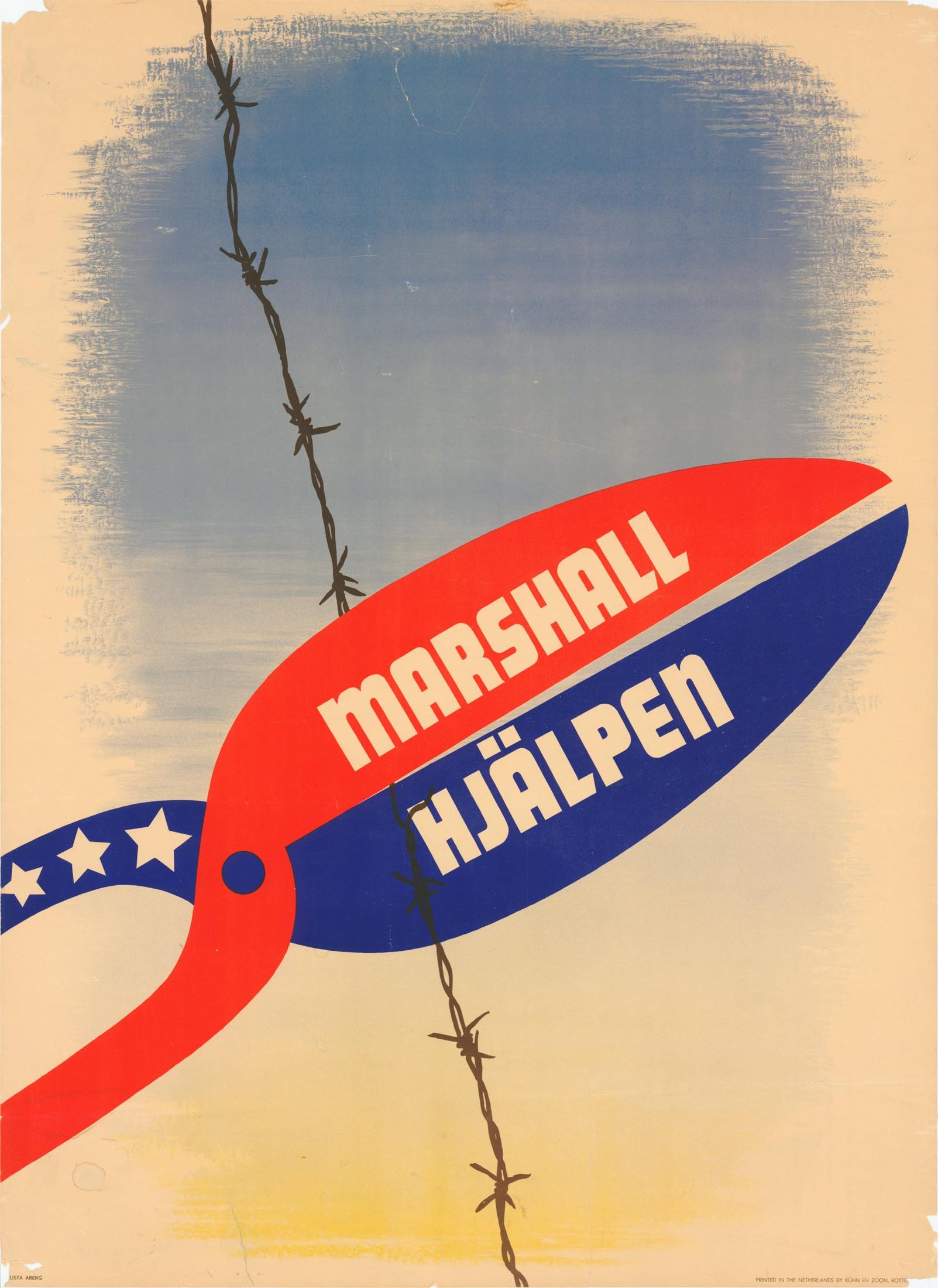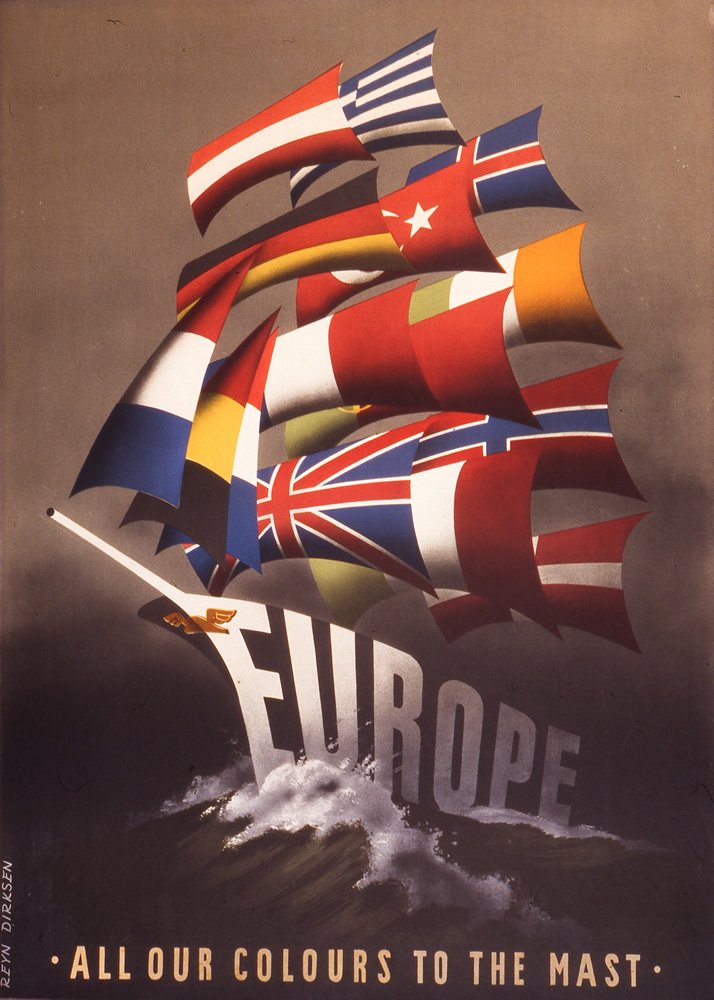#68 The Marshall Plan: Protecting Europe from Communism
The Marshall Plan had several purposes. First, the American economy needed outlets for export, and second, the entire European and Japanese economies were in ruins and debt from the war. The Marshall Plan provided much-needed trading dollars. The plan was also intended to counter the attractions of Soviet Communism and probably saved western Europe from following a socialist path. The infrastructure of Europe, including a large number of homes and factories, had been destroyed by the war.
American food and goods were the only trade available. This required US dollars and they were in very short supply. Every country of Europe was heavily in debt to the USA partially due to the loans during the war and partially after. The USA was able to assert her ascendency over the French, British, and Dutch (the old Great Powers) so that they never became dominant again. The British, who were better off than anywhere else in Europe in 1945, were treated harshly. Lend-lease, the system of loans during the war, was cut off immediately after the war ended, and the British alone were forced to pay them back.
The Marshall Plan 1948 to 1952 was well thought through by George Kennan. It was a clean break. It provided the Europeans with currency to buy US goods; it allowed rapid recovery and it provided a bulwark against the Communist parties of western Europe. The plan provided the conditions for rapid recovery, for both winners like Britain, and losers: Germany Italy and Japan. It made certain there was no repeat of the chaos that ensued after the 1919 Versailles Agreement.
There were many elements to the Marshall Plan, and many historians have commented on the remarkable recovery of Germany and Japan without explaining how this occurred. What were the key elements that led to such a speedy return to robust economic health?



Restarting the German and Japanese economies
At the end of hostilities in 1945, had the victors, the USA, learnt any lessons from the Versailles Treaty of 1919? At Versailles, the losing side was severely punished; this was long a European feudal tradition. In 1919, punishing Germany had been a gross error. Did anyone learn this lesson? Punishing a dynamic industrial educated society was different in principle from punishments meted out in the preindustrial era. The American approach to the resuscitation of Germany and Japan might have supported this view. After 1948, the American support through the Marshall Plan for both Japan and Germany was exemplary. Both nations were able to put their economies and people together in double-quick time. They were not allowed to re-arm, but they were able to create the wealthiest economies in their regions within 25 years.
Between 1951 and 1960, the German economy increased at a rate of 7.5% per annum. Japan achieved an even higher rate of growth of 9.75% annually between 1956 and 1970. Both were well on the way to full recovery able to support their populations.
American motivation for all of this was entirely self-centred before this looks too altruistic. They feared the attraction of Soviet Communism and argued that the best way to combat socialism was to grow their former adversary’s economy. US-German and Japanese development policy were determined in the main by the threat of socialism.
It is worth mentioning here that the USA has never again used the support of the kind she used in the Marshall plan. Despite the many countries that were ‘laid waste’ in wars such as Afghanistan, Iraq, Syria, and Libya. None received a Marshall Plan or anything similar.
The Real Enemy: Soviet Socialism
This 1947 pamphlet produced by the Catholic Catechetical Guild Educational Society was part of a "Red Scare" in the U.S. that raised fears about the horrors of a communist takeover. Wikimedia Commons.
Unknown, “An Anti-Communist Comic Book Warns of "The Red Iceberg",” SHEC: Resources for Teachers, accessed November 26, 2021, https://shec.ashp.cuny.edu/items/show/661.
The framework of American motivation supporting Germany and Japan centred around a key dynamic of the period. The allies of the war - the US, UK, and USSR - were an alliance of convenience which lasted only until the end of hostilities. So far as many of the rulers of the UK and USA were concerned, soviet socialism was at least as much an enemy as Nazi Germany. Some, such as the Dulles brothers who headed up the CIA and the state department in the USA, thought it was a still worse disease, that had to be eradicated by any means.
Russia had been invaded in 1918/19 by both the UK and USA, despite the exhaustion of the war they had just fought. From the 1930s, plans to defeat Stalin's Russia by pitting Nazi Germany against each other were part of British plans. Stalin’s requests to London for a second front against Germany in 1942 and 1943 were ignored for 2 years by Churchill. USSR’s post-war needs were cut off within days of the war ending; there was no lend-lease for them.
So far as American post-war policy was concerned, communism was an anathema. Privately owned property was to western leaders sacrosanct. Any society that questioned the right of an individual to own any volume of property was beyond the pale, and any means to defeat such people or organisations were considered legitimate.
Simplistic as it might sound to some readers, this was the one key issue that drove American policy between 1948 and 1989 when the Soviet Union collapsed. The USA 'war' against socialism was unrelenting in any part of the world, including at home within the USA: it was the underlying element of the Cold War. There was little the Americans would not do to defeat what they defined as socialism. But we are moving too fast beyond our present story: the German and Japanese recoveries, forming an important element within Cold War strategy.
Copyright Notice. This blog is published under the Creative Commons licence. If anyone wishes to use any of the writing for scholarly or educational purposes they may do so as long as they correctly attribute the author and the blog. If anyone wishes to use the material for commercial purpose of any kind, permission must be granted from the author.











The peoples of Western Europe had risen from one world of relative poverty and had learnt how to take the wealth from the Americas and transfer it to their own countries. This was slavery and latterly until 1920, indentureship. A whole set up of banks, shipping companies, and insurance companies had arisen to make these transfers possible. From the 1750s the European invaders turned their attention to Asia and systematically began the colonisation process anew. At the same time, as they attempted to colonise and extract the wealth of Asia, the colonising countries began the process we now recognise as industrialisation alongside the rapid growth of cities. The surplus resources extracted through colonisation were used to finance the growth of new industries.